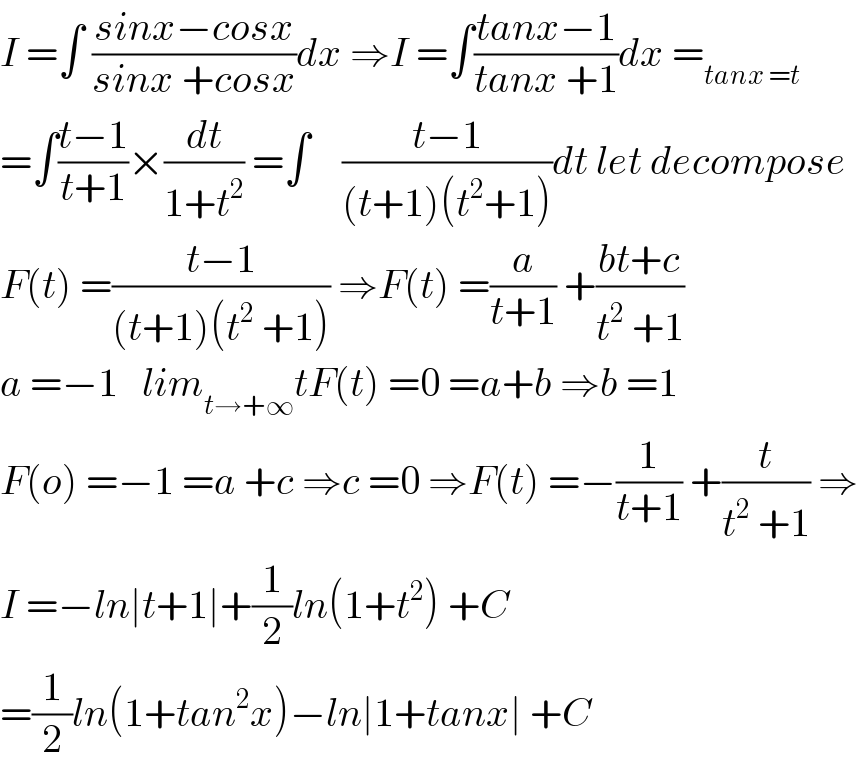
Question and Answers Forum
Question Number 93958 by mashallah last updated on 16/May/20

Commented by mathmax by abdo last updated on 17/May/20

Answered by john santu last updated on 16/May/20

Answered by Kunal12588 last updated on 16/May/20

| ||
Question and Answers Forum | ||
Question Number 93958 by mashallah last updated on 16/May/20 | ||
 | ||
Commented by mathmax by abdo last updated on 17/May/20 | ||
 | ||
Answered by john santu last updated on 16/May/20 | ||
 | ||
| ||
Answered by Kunal12588 last updated on 16/May/20 | ||
 | ||
| ||